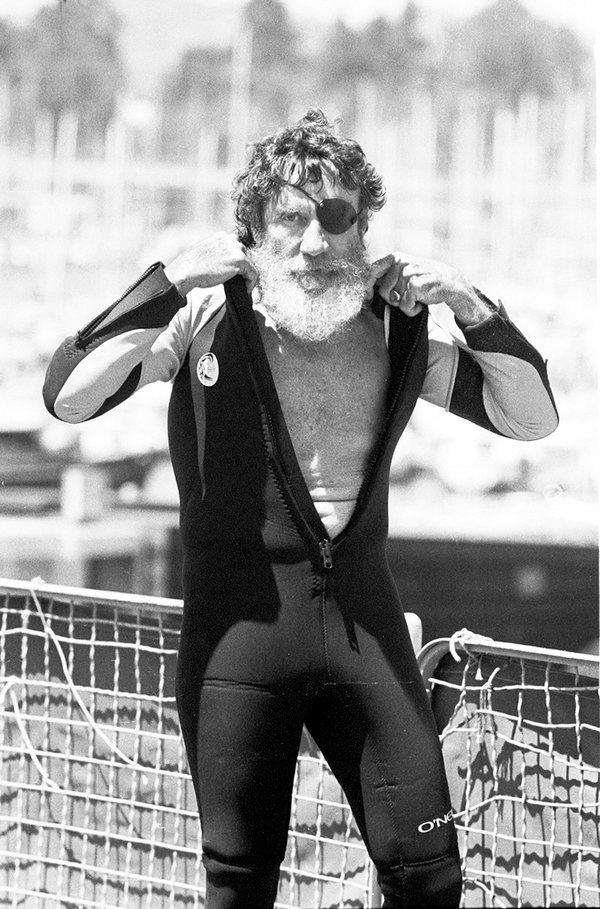
'Like every successful product, the wetsuit had multiple fathers.
Hugh Bradner, a professor at the University of California, Berkeley, and a former Manhattan Project physicist, originated a synthetic rubber version in 1951 as insulation for deep-sea and scuba diving.
Bill and Bob Meistrell began making wetsuits in Southern California around 1952, about the same time Mr. O’Neill launched his label. The Meistrells’ company still markets them under the Body Glove brand.
But Mr. O’Neill as the wetsuit’s commercial pioneer.
He also helped establish the Central and Northern California coasts as a year-round surfers’ haven — all while remaking himself into an industry spokesman and surfing legend.
Before the advent of the wetsuit, Mr. O’Neill and his fellow surfers had been braving the frigid Pacific by wearing long underwear or sweaters coated with oily sealant, or by stuffing flexible polyvinyl chloride into their swim trunks.
After investigating and using neoprene that has been developed by Dupont two decades prior, Jack began developing suits for surfing and bodysurfing, originally covering just the torso. They were not waterproof, however. Rather, the suit trapped a thin layer of water, warmed by body heat, between the neoprene and the skin.
By 1960 Mr. O’Neill was laminating an elastic nylon jersey lining to the neoprene foam to prevent it from tearing, and to make it easier to put on. He made his first full-length model within a decade.
He rode a wave of surfing fever that reached an unforeseen following in colder climes; he even experimented with a version in Antarctica.'
The rest is history.
Thank you for bringing such amazing technology to the world Jack, your soul may ride with us every wave we will take.






